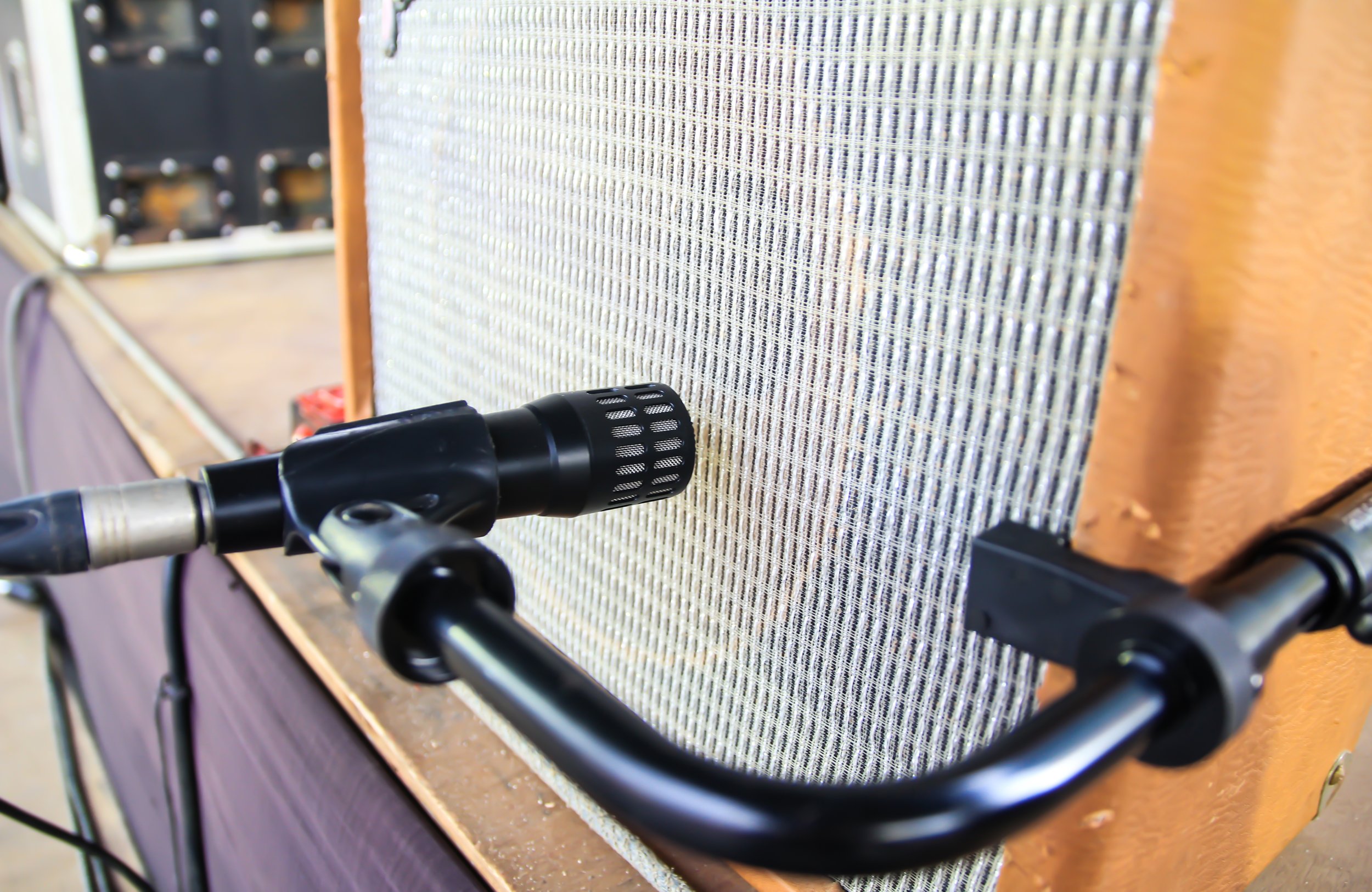Miking Your Amplifier
A lot of current amplifiers have DI outputs that include speaker simulations and microphone simulations. Convenient certainly but many older amplifiers do not. So how to record it, or send a signal to a PA?
We jump back a couple of decades. The days where hundreds of watts of tube amps at venues were waning, because the venues wanted to use their in house systems so they could be in charge of volume. Live acts started to use devices to reduce the volume of an amp while still allowing it to be cranked to the level needed for the tones provided. The easiest and first route to do this is the Master Volume knob and amps started to get those from the factory, or if older were just turned to the maximum allowable volume. That volume level is continually being reduced so as not to interfere with the dumb asses trying to stream online while talking over the music..
In studios, we see cabinets put in isolation rooms because with the amp set the way the player wants it, it gets too loud for some folks. So to get that sound, into the recording system, we again use microphones.
With an amplifier we are typically dealing with very powerful sound pressure levels, so we can usually get by with a relatively inexpensive dynamic microphone when working with a real amp. The number one microphone in the world for this purpose is the Shure SM57. They are rugged, do a terrific job and are very inexpensive compared to condenser and ribbon microphones. It is my go to microphone when recording a real amp and over decades has never let me down. Of course there are other options, and I own a few, but when push comes to record, invariably if there is a live amp being miked, the microphone is an SM57.
You run the cable from the microphone into your recording interface and that is that.
Or is it?
Many dynamic microphones use a cardiod pickup pattern meaning they are more sensitive in one direction than in others. In the case of the SM57, you point the end with the grill at the source. But where at the source?
This can engender a long conversation and I do not propose to have a one size fits all answer. Microphone positioning is as much art as science. Some favour the microphone pointed directly at the center of the speaker cone. Some favour pointing at the junction of the cone and the centre cap. Some prefer to point the microphone at an angle to the speaker itself.. You may be surprised how much microphone positioning changes the recorded sound.
Another subpart to the question is how close to the speaker should the microphone be. It’s very common for engineers to place the microphone capsule right at the speaker grille. This works, but you do not get any of the sound of the space where you are recording. If you like that, go for it. Others prefer to set the microphone back from the speaker grille a bit. Still others like to set the microphone way back from the speaker grille to have a lot of contribution from the room itself. Again you choose.
I will often double mic a cabinet if it is isolated, one in about six inches away and and another ten to twelve feet away and then mix the signals in the mixing and production stage. Wonderful fun, but more work and more time required. Sound has a fixed speed in air, so the far microphone cannot be too far or you will get phase issues. IT’s always a bit experimental when miking the same thing at different distances.
If you like what I do here for you, please become a supporter on Patreon. Your monthly contribution makes an enormous difference and helps me keep things going. To become a Patreon Patron, just click the link or the button below. Always feel comfortable to send in a question or to post a comment. I read them all and respond as appropriate. Thanks for your support of my work. I’m Ross Chevalier and I look forward to sharing with you again soon.

